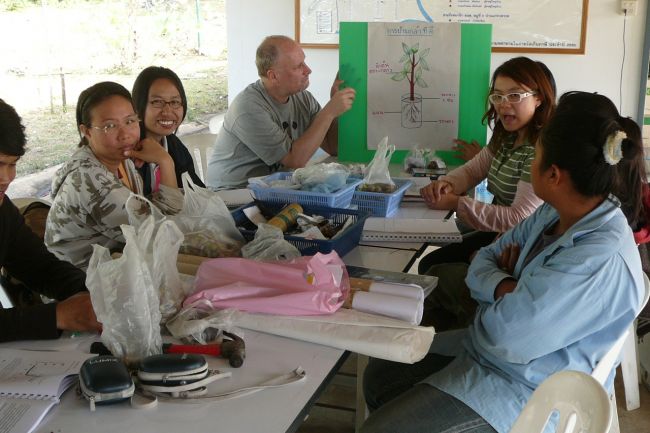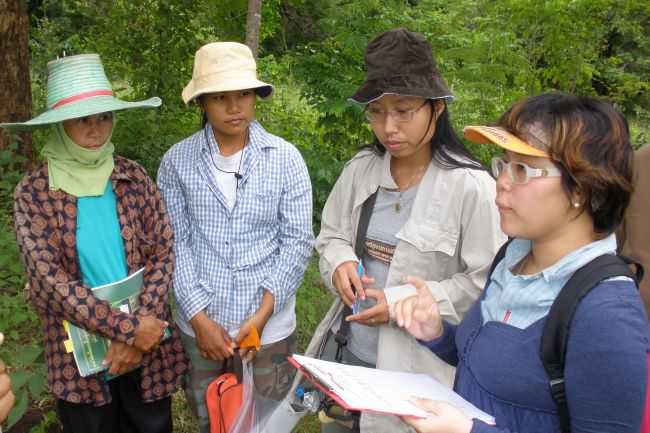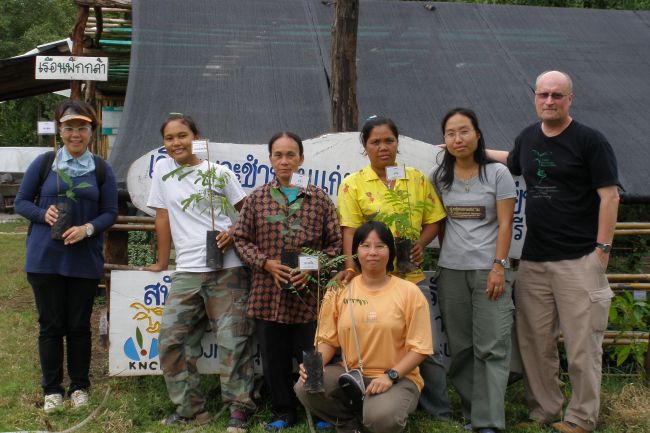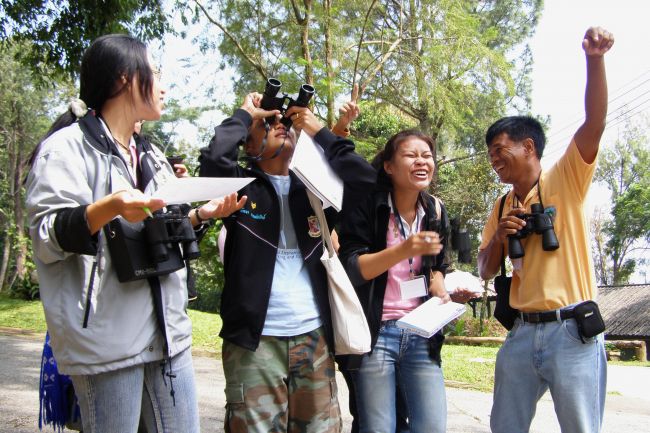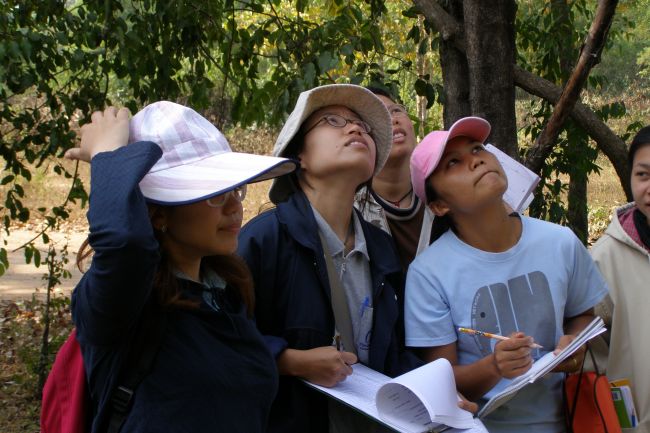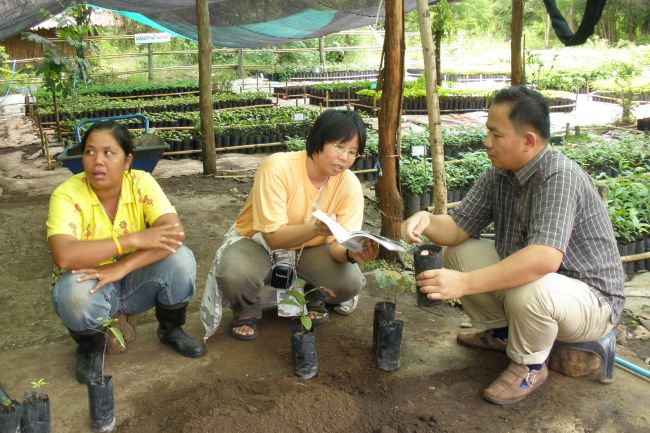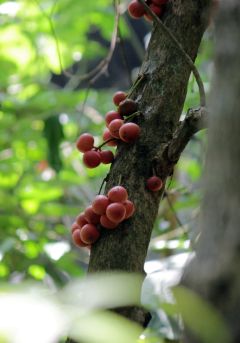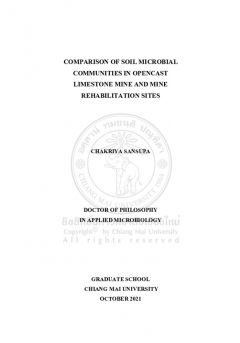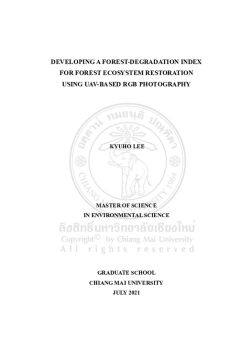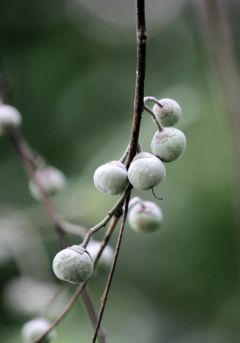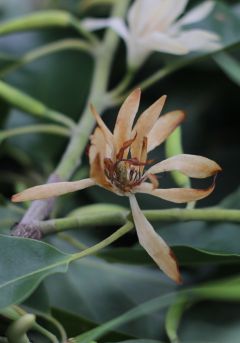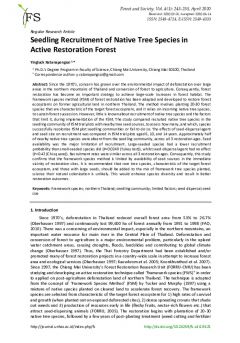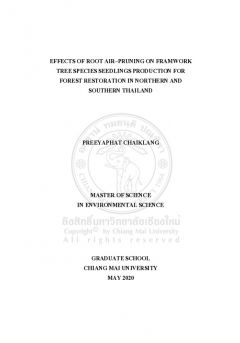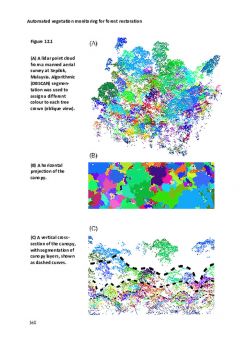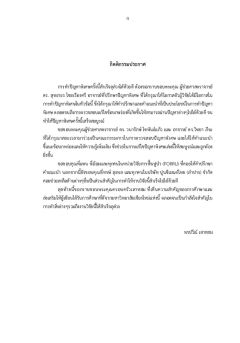
This project created an original knowledge-base to restore bamboo-deciduous forest in Western Thailand, particularly to create habitat for elephant conservation and to reduce human-elephant conflicts around the Salakpra Conservation Area, Kanchanaburi Province. The project was funded by the Keidanren Nature Conservation Fund with the Zoological Society of London (ZSL) and was implemented by the Elephant Conservation Network (ECN), with FORRU-CMU assisting with technical matters.
The objectives were:
- to develop local capacity to implement forest restoration activities;
- to determine tree species composition of the main forest formations in Salakpra;
- to determine optimal seed collection times/treatments to hasten seed germination & seedling growth;
- to develop and manage a community-based forest tree nursery and planting sites and
- to present initial results to stakeholders to empower them to implement forest restoration.
Activities and outputs
FORRU-CMU's inputs consisted mostly of training ECN staff on restoration theory and practices; training local people in nursery techniques so they could grow saplings of the required tree species and assisting with monitoring trial plots and analysing the data, culminating in a technical manual (in Thai) on how to restore the bamboo-deciduous forest that dominated lowland areas of Salakpra—bamboo being the main food of the several hundred wild elephants that inhabited the protected area.
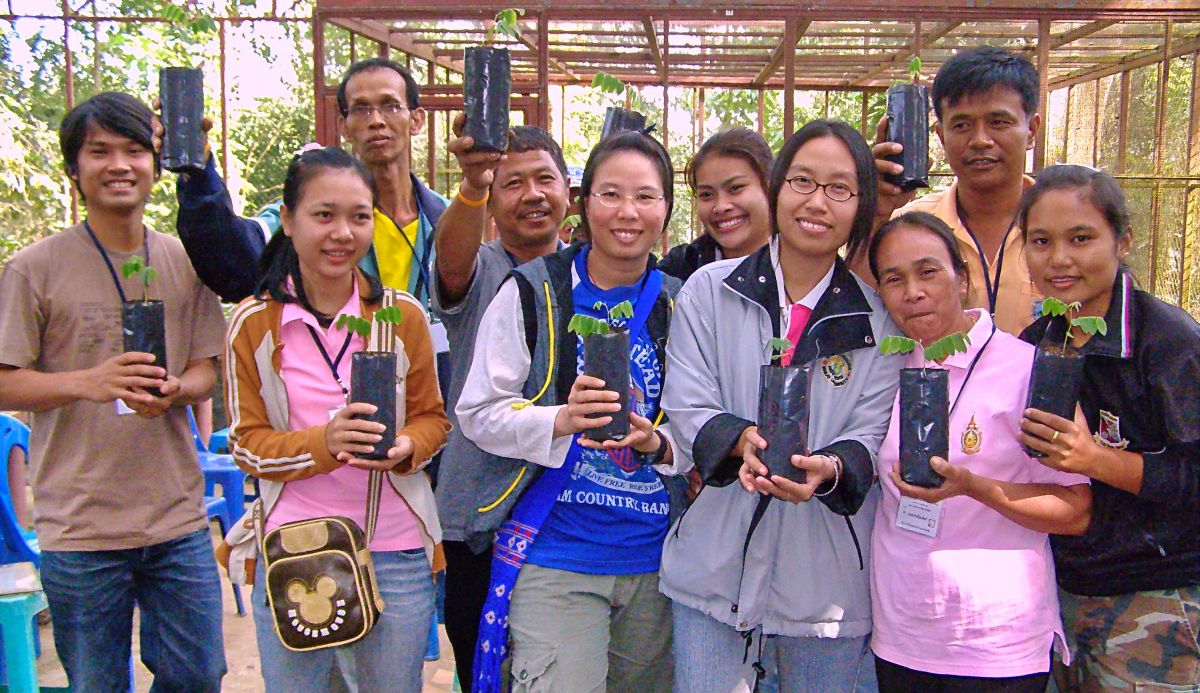
The final project activity, in September 2011, was an information-sharing workshop, with local foresters, community leaders, villagers and NGO representatives, at which the results of nursery experiments and field trials were presented, along with the resultant best practices detailed in the manual.
Field Performance of Planted Trees
Monitoring is essential for adaptive management. Click here to learn how to measure tree survival and growth and find out if your restoration plan is working.
21: Comparison of the Reproductive Phenology of Evergreen Forest Trees
ABSTRACT: In an evergreen forest at Doi Suthep-Pui National Park, Chiang Mai Province, ten tree species were observed for their phenology, monthly between March 2020 and February 2021: Baccaurea...
22: Comparison of Soil Microbial Communities in Opencast Limestone Mine and Mine Rehabilitation Sites
Opencast mining is considered as an extreme form of land degradation, requiring an intensive array of rehabilitation practices. The mine rehabilitation practice, in the semiopencast limestone mine...
23: Developing a Forest-Degradation Index for Forest Ecosystem Restoration Using UAV-based RGB Photography
Abstract: Forest degradation assessment is essential to plan restoration. This study was a first attempt to develop a forest-degradation index (FDI), based on data from unmanned aerial vehicles...
24: Effect of microsite light on survival and growth of understory natural regeneration during restoration of seasonally dry tropical forest in upland northern Thailand
ABSTRACT: The framework species method (FSM) of forest restoration involves planting mixtures of native forest trees to catalyze or complement natural regeneration and accelerate recovery of a...
25: The Effects of Climate Change on Tree Phenology for Forest Restoration in Northern Thailand
ABSTRACT: The current world climate is rapidly changing and affecting physical and biological environments. Some abiotic factors have an influence on tropical forest ecosystems. Each flowering...
26: The Impact of Climate Change on Tree Phenology for Forest Restoration in Northern Thailand
ABSTRACT: Climate change causes changes in abiotic factors such as temperature, rainfall, and relative humidity, which may result in forest trees adapting their growth patterns to the changed...
27: Seedling recruitment of native tree species in active restoration forest
Abstract: Since the 1970’s, concern has grown over the environmental impact of deforestation over large areas in the northern mountains of Thailand and conversion of forest to agriculture....
28: Effects of Root Air-Pruning on Framework Tree Species Seedlings Production for Forest Restoration in Northern and Southern Thailand
Abstract: Tree planting is a simple tool to bring back the forest area. Therefore, seedling production is one of the important steps in forest restoration. Root pruning can promote the root system...
29: Automated vegetation monitoring for forest restoration
ABSTRACT: We discuss the potential of automating vegetation monitoring, to aid forest restoration. We propose that automated monitoring focuses on estimating forest biomass and tree diversity,...
30: Diversity of Ground Flora in Restoration Area of The Siam Cement (Lampang) Co., Ltd Limestone Quarry
Ground flora communities in framework species method restoration area of Siam cement (Lampang) Co. Ltd. limestone quarries were studied. adding top soil with the value of 2.81, 2.50 and 1.99,...

